
29 minute read
Bus Equipment People
Complete Coach Works
Complete Coach Works (CCW) is proud to welcome Tracy Owen as the company’s newest regional sales manager. With more than 30 years of unique experience and expertise in sales, Owen will continue to build his success with CCW, the nation’s leading bus remanufacturing company.
Owen has worked as a sales manager in both the transit bus and motorcoach industries. He is well rounded and has experience working in several facets of the bus industry, such as refurbishments, OEM and preowned bus sales. Throughout his tenure in the indus- TracyOwen try, he has developed many relationships with transit agency personnel, bus companies, owners, operators and other industry professionals.
“I’m very excited to join Complete Coach Works. The company has many options to offer its customers and has earned respect as the nation’s leader in remanufacturing. I look forward to serving the industry and to be entrusted to represent Complete Coach Works as a regional sales manager, ” states Owen.
Owen will lead the sales organization of the Central and Southern regions. He will assist in providing sales and support to CCW’s cliental and build relationships with potential customers.
Brad Carson, director of sales and marketing at CCW, states, “Tracy is an excellent addition to the CCW family. Tracy brings a proven track record of sales management with solid industry experience. We are confident he will serve our customers and provide them with the best service possible. ”
Proterra
Proterra, a leading innovator in heavyduty electric transportation, on November 13 announced Gareth Joyce as president of Proterra Powered and Energy business units.
As president of Proterra Powered and Energy, Joyce will lead Proterra’s growing business as a provider of its electric vehicle technology to commercial manufacturers and charging infrastructure
Some of the advertisements have hyperlinks. If you click on them you will surf to the Website of the advertiser.
solutions for heavy-duty electric fleets. In his role, Joyce will report directly to Proterra’s Chief Executive Officer Jack Allen.
“Proterra is on the leading edge of the technologies that will address our environmental sustainability challenges and climate change by helping businesses and fleet operators electrify their commercial vehicles. I’m excited to join the Proterra team as we work to deliver even greater impact for our customers and the environment, ” Joyce said.
Joyce brings 20 years of experience in the automotive and airline industries. He joins Proterra after most recently serving as Delta Air Lines’ first chief sustainability officer where he was responsible for overseeing Delta’s efforts toward becoming carbon neutral and a responsible steward of our environment. Prior to joining Delta, Joyce held a variety of senior leadership positions with Mercedes-Benz throughout South Africa, Europe and North America – having served as vice president of customer service for MercedesBenz North America and finally as the president and CEO of Mercedes-Benz Canada.
Proterra Powered leverages Proterra’s electric vehicle technology and expertise to help commercial vehicle manufacturers electrify their vehicles. Proterra battery systems are utilized by world-class OEMs to introduce 100 percent battery-electric vehicles, including electric school buses, coach buses, delivery vans and low-floor cutaway shuttle buses. To date, Proterra Powered has helped world-class OEMs like Thomas Built Bus, Van Hool, Freightliner Custom Chassis Corporation (FCCC), Bustech and Optimal-EV introduce 100 percent battery-electric vehicles that are powered by Proterra electric vehicle technology.
Proterra Energy™ fleet solutions offers a turn-key approach to delivering the complete energy ecosystem for heavy-duty electric fleets including charging infrastructure design, build, financing, operations, maintenance and energy optimization. Proterra recently unveiled its new, high-powered charging solution designed to enable the electrification of large-scale vehicle fleets. q

A Look into the Future of the Bus Industry

by Larry Plachno
Recent articles have suggested that bus companies should be looking to make changes to prosper in the post-pandemic era. As a result we have tried to determine what we should expect in the near future. Shown here is an MCI J4500, the most popular model coach for many years. MCI.
In recent issues of NATIONAL BUS TRADER, your editor as well as Dave Millhouser offered articles suggesting that bus operators should be making plans for the future. As a result we have had inquiries from readers asking what will the future of the bus industry look like. What should we plan for?
We have been through this kind of thing in the past when readers have submitted questions to our “Curious Coachowner” question and answer column asking us what will happen in the future. In many, if not most, cases our crystal ball was a little cloudy and it was difficult to pin down the future. However, there has been a proliferation of predictions for the future from numerous experts, organizations and groups. Instead of chaos, our review surprisingly found that they tend to agree in many major areas. Most differences appear to be between varying industries or operations. Hence, we were able to take the basic information or predictions and generally apply them to the bus industry. 16•NationalBusTrader/January,2021
Following is a list of some of the key points about what is expected in the future that most everyone seems to agree on. Where necessary, we have applied things to the bus industry and added some information and suggestions if appropriate. We would welcome additional comments, questions and suggestions.
Getting People Back on the Buses
Somewhat obviously, our primary interest is getting people back on the buses. It appears that there are three different basic levels to be taken into consideration for today and as we move into the future.
First, the current situation. There are buses andtoursoperatingthathavetakensafetyprecautions and comply with appropriate laws and regulations. There are numerous components and systems that can make your buses safer. The most obvious are plastic partitions for the driver and passengers. You can put UV light kits in your heating and air conditioning ducts to purify the air and reduce bacteria, viruses and mold. You can get a pneumatic nebulizer system that can disinfect an entire bus in 30 minutes when it is empty.
Among the most interesting items is a smart camera for access control. It not only can take the temperature of boarding passengers but also verify whether they are wearing a mask or not. Requirements will vary as things develop, but many bus operators have found it possible to resume operations using some of these safety items.
We have received word that several bus companies are back to partial operation by working at it. They have used safety equipment and systems to get some of their buses back on the road again. This includes scheduled service, charters and contracts, but we hear that some tours are also back out on the road.
Second, control of COVID-19 through vaccine and improved care. Everyone sug-
gests we are making progress. In many areas, the fatality rate for COVID-19 has dropped to less than one percent. Our doctors and medical staff now have learned how to better treat individuals involved and we are seeing more and faster recoveries. As we go to press, the new vaccine is already being distributed to primary groups and medical staff.
Third, the vaccine and improved treatment will not be the end of our problems. Virtually all of the experts expect that even after the worst of the pandemic disappears, there will be a residual social distancing effect. Many, but not all, people will continue to be afraid of close contact and will avoid public transportation as well as public places. The bus industry may find some help from government agencies willing to support buses to reduce pollution and traffic congestion. See notes below on increased auto usage.

Government Funding and Self-Reliance
In spite of the fact that the travel and transportation industries have been hit very hard by the pandemic, relief funding has not come up to requested levels. Arally in Washington, D.C. as well contacting elected officials has failed to generate any real progress in this area. However, the pros suggest that instead of waiting for the government to do something, the companies that make progress on their own will come out ahead in the long run. If government support does become available, you will already be far ahead because of your own efforts.
What you need to do is to make your bus operation more profitable including taking a long and hard look at your operating strategy. No two operations are alike, but suggestions would include running more bus tours,
Numerous bus operators have been able to resume operations by adding safety features to their coaches. These include a range of several different items and systems including partitions, UV light kits, a pneumatic nebulizer and even a device to check incoming passengers for temperature and masks. This photo came from Dale Laird in British Columbia and shows partitions installed on a bus from Cypress Coach. DALE LAIRD.
expandsion in contracts and even looking at scheduled service if it is profitable for you.
Working from Home / Contract Charters
The pandemic has prompted many people to work from home. There is a warning that not all of these will return to the office once the pandemic ends. One of the long term results of COVID-19 will be an increasing number of staff working from home. This will impact white collar workers more than the blue collar workers who are more likely to work in factory or industrial settings. In some areas this may be obvious on commuter trains and commuter buses.
Arelated item is that companies with staff that do commute may look favorably on a private bus service with special safety features rather than general public transportation. Hence, it would not hurt to contact major employers to see if they would like to provide a safer private transportation to their staff using your buses with special features.
Concern over COVID could be as asset as well as a liability. Some major employers may become interested in transporting their staff to work on buses with special safety features. This photo shows a Loop bus that transports staff in Silicon Valley. LOOP. Business/Pleasure Travel
Many of us remember the unfortunate 9/11 tragedy in 2001. Travel and transportation was disrupted to a greater or lesser extent for as much as 18 months. We should expect the same kind of thing following the pandemic and start preparing for it.
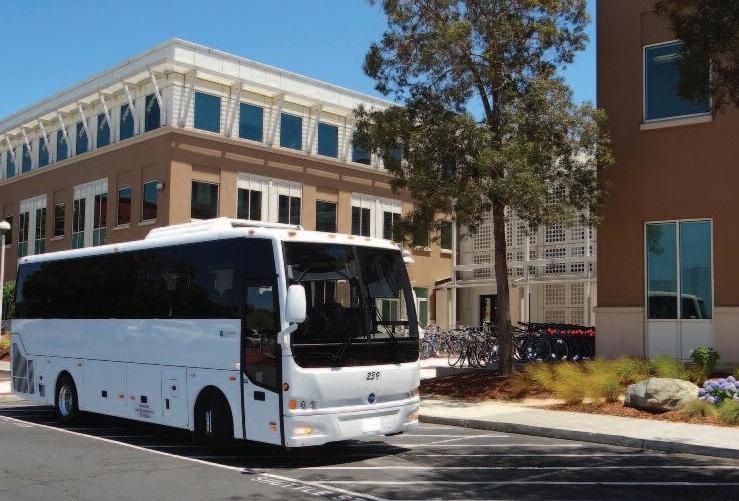
The experts tell us to anticipate the same kind of situation as happened back then. They are expecting a drop in travel for several months following a similar pattern. This means that personal travel should come back before business travel. Not only is there some pent-up demand for personal travel, but holding a business meeting with Zoom works better than sightseeing with Zoom. What this means from the standpoint of the bus industry is that the bus tours and casino trips will probably come back quicker than the convention shuttles.
Knowing that this will happen allows us to prepare for it in advance. This would be an excellent area for the industry suppliers and associations to get together and come up with ideas and programs to help the industry get people back on buses quicker. BusTrader/January,2021•17
Use of public transportation is expected to remain low after the pandemic crisis eases. Personal travel will be the first to return such as this bus tour group. NBT. Conventions and trade shows may take a little longer to return. Shown here is a Prevost coach at the Orange County Convention Center in Orlando, Florida. NBT.


More Autos on the Roads
This is becoming a relatively complex subject because it has several facets. Let me try to take each of them individually.
The experts are saying that as the pandemic eases, we will see an increase of autos on the road. This will probably start with increased used auto sales and then push up new auto sales. The primary reason for this is that many people will continue to adhere to social distancing which is better accomplished in their own car rather than in a commuter train or bus. This will cause two things. One is that municipalities will have increasing problems with traffic, congestion, pollution and lack of parking. The second is that it will slow down getting people back on buses.
What can the bus industry do about this? One of the more obvious answers is to start working with your municipal leaders and elected officials. Maybe you can get put on a transportation committee or at least be recognized as a valued transportation expert. When the municipal leaders see the traffic, congestion, pollution and lack of parking, they will be looking for ideas and running buses is a very logical and obvious solution.
Being Productive While Traveling
One of the more interesting things to come out of this is taking a look at why people drive cars and what alternatives are available – including buses. It is very obvious that more people take public transportation during peak hours than during nonpeak hours. Why? Two answers are obvious. One is that transportation schedules are more frequent and hence more convenient during the peak periods. Asecond reason is that increased traffic during peak periods makes auto usage slower and less desirable.
Increasing the frequency of public transportation service during non-peak periods would help get some people out of their cars, but is this financially practical? It does not take much study to determine that com18•NationalBusTrader/January,2021 muter trains and buses cost more to run because everything is geared to two peak periods. Staggered working hours were tried in some places but they never seemed to work well.
Can we get people out of cars and into public transportation? One study found that less than 30 percent of car users were “married” to their cars. The other 70 percent were willing to take public transportation depending on what was offered. What is interesting is the things they are looking for. Most of these people were not looking for cheaper costs or a more comfortable seat. High on their priority list is shorter travel times, being able to use travel time for something else and location.
Those seeking to make better use of travel time want Wi-Fi on the buses and commuter trains. This should answer the question of whether to put Wi-FI on your buses or not. What is interesting is that some travelers were looking for quiet or sound-insulated seats, presumably to nap or read.
Another factor in getting people out of cars is location. One of the reasons people drive cars to work is because they then do not have to wait for the next commuter bus or train. Others say that their car is more convenient than public transportation because the bus or rail station is not located next to their office. Public transportation can not win over riders if it does not serve their location well.
Too Many Options
This brings up the interesting question of transportation options. Some of the researchers have suggested that part of the problem of city congestion is caused by too
Studies have shown that there are several things that can get people out of their cars and back into buses. One of the most-mentioned is the availability of Wi-Fi so they can multi-task on their way to and from work. This explains why more and more new buses are being equipped with Wi-Fi.

Scheduled service bus lines often do better when they have anchors providing a substantial activity such as railroad stations, casinos, schools and major attractions. NBT. Mercedes has tested this autonomous bus on a busway in Holland. Autonomous buses are not here but will most likely initially start first with transit service. MERCEDES.
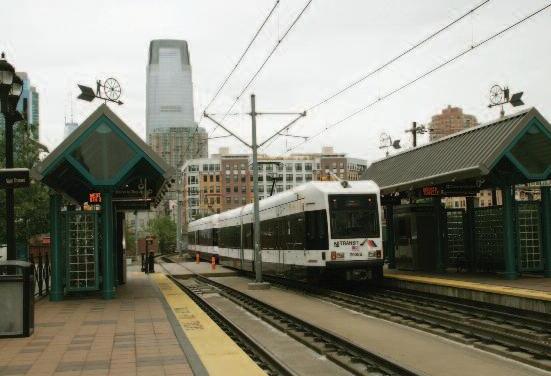

many transportation options. I tend to disagree on this if only because one size does not fit all. Not everyone works next to the bus or railroad station.
At the risk of diverting slightly, I might mention that many years ago (in another life as they say) your editor worked for a while at a location northwest of Chicago’s loop and arrived in Chicago by commuter train. Regardless of the weather, I usually walked a mile from the train station to work because there was no direct or good public transportation and any other alternative would take longer than walking. Speaking of alternate transportation, I might mention that the sightseeing boats did transport commuters from one railroad station to North Michigan Avenue – an area somewhat remote from the railroad stations that had a lot of commuters.
As a result, I might suggest that if bus companies are searching for new income opportunities, you might look for travel needs that are currently not being met. In addition to commuters, suggestions might include schools, gaming, airports, railroad stations, shopping and other places that generate traffic.
Autonomous Cars and Buses
Do not hold your breath on autonomous cars and buses. While progress has been impressive, there seems to be some difficulty in getting over that final hurdle to be practical. At this point we have seen pods and small shuttle buses in autonomous operation, but putting big autonomous buses on city streets is still some ways off. Although I will admit that I was impressed when Mercedes-Benz ran an autonomous bus on a busway from Schiphol airport in Amsterdam. When they do come, the first real autonomous buses will probably be used in shuttle and city transit service.
What about autonomous cars? One of the worries about autonomous cars is that they will increase congestion in big cities. People who today are unable to drive will be able to use autonomous cars. They are an ideal way to transport patients to doctor and clinic visits. In addition, autonomous cars can also be easily used to transport merchandise and deliveries without need of a driver. They will take business away from bus operators while increasing congestion.
I personally dread the thought of people putting kids in autonomous cars to send them to school or visit grandma, but you know that is going to happen.
Residual Value
There are several factors behind the reduced residual value in buses, but the most important is probably supply and demand.
Those of us who remember back to the fuel crisis of 1979 are probably aware of the following increase in bus residual values. Because of fuel concerns and some lack of availability, a small percentage of auto owners parked their cars and rode public transportation. This created a substantial increase in ridership for both transit and coach operators.
New bus manufacturers could not gear up production lines fast enough. In some cases a production line slot could be sold to another bus operator at a price. Coach operators began looking on the used market for additional coaches to handle their increased ridership. For months, the price of preowned coaches went up and not down. Even the older stick-shift GM coaches found ready buyers. Whether fortunately or unfortunately, the fuel crisis was soon over before increased new coach production could ramp up significantly.
The lack of residual value in used coaches will most likely remain with us for a while. There are several reasons for this, but supply and demand are among the most important. This group of buses was photographed at the Prevost facility in Nashville. NBT.

We are facing the opposite situation now. With many buses idle, there is an abundance of pre-owned coaches on the market that drives prices down. While supply and demand may be the biggest factor, there are other reasons. There has been a lack of new start-up companies that typically begin with used equipment. There is also a situation with newer technology and components making older pre-owned coaches less desirable.
The reality is that this situation is not going to change quickly. We need to make bus operations more profitable to make up for this lack of residual value. Expect that some new bus builders will either not want to take trades or will not offer much for them. You may find yourself looking for buyers for the older coaches in your fleet. Please remember that NATIONAL BUS TRADER does offer display and classified ads for this.
The experts are predicting an increase in auto traffic in major cities as the pandemic eases. This results from ongoing emphasis on social distancing and will cause increased traffic and parking problems. Some bus operators may be able to take advantage of this problem by providing alternative service. Moving to Megacities
The last item on our list may be the furthest in the future and the least important. Most of the research groups say that globally there is a movement of people from rural areas to bigger cities. One suggests that by 2030, more than 750 million people will live in megacities of 10 million residents or more.

The first thing to note is that this is a global trend. It is caused in large part because many undeveloped countries have little or no employment, medical care and other facilities outside of the big cities. In many if not most developed countries, there is substantial employment and medical services outside of the big cities. In fact, some companies have been moving out of the big cities and into suburban and rural areas.
In the United States, a movement into the cities from the suburbs and rural areas would be a reversal of the general trend for decades. What was probably the major factor behind this was children and families. Even prior to World War II there was a movement of families from the cities to suburban and rural areas seeking a better location to raise children.
Will we see this trend reversed in the future? Some people suggest that with more single people and fewer children, we may well see some movement from the rural areas back into the cities. The big question is whether the cities can handle an influx of more people when they are already having problems with aging infrastructure, congestion and pollution. An even better question will be whether bus operators can take advantage of this trend if it does develop. q

On a global basis, the experts are predicting an increased movement from rural areas to big cities in the years ahead. The jury is out on how this might impact transportation in the United States. This photo shows Manhattan and the Statue of Liberty that has traditionally greeted newcomers. NBT.
It is hard to believe, but the American Bus Association’s Women in Buses Council is turning 10. The Women in Buses Council, a leadership group within ABA, is proud to announce and celebrate the 10-year anniversary in January 2021. Women in Buses was established in 2011 as a resource to recognize the significant role of women in the motorcoach and tour/travel industry through networking, education and mentoring programs.
Since the conception, the leadership, structure and activities of the council have been developed to meet ongoing growth and goals of women in the industry. Women in Buses has become an educational resource for ABA members and the entire industry. WIB continues to expand its mission and presence based on industry and member requests. “WIB was created to help women in the industry connect with one another. Today it continues to provide networking opportunities but has grown into serving as a strong voice of women in the industry that supports ABA’s legislative agenda and brings top tier education to council members and the industry at large,” said Peter Pantuso, ABA’s president and CEO.
The motorcoach industry consists of several strong, female leaders who support the industry through leadership roles in their own companies. Many organizations consist of females where a spouse, partner or multigenerational family member was no longer able to run the business. Women in Buses was designed as a way for these key female representatives to connect offering networking opportunities.
The transportation and motorcoach industry has always been predominantly male-dominated, especially for motorcoach owners. With the assistance of the ABA, Women in Buses was created showcasing the variety of brilliant female leadership. According to founding WIB Chairwoman Cam Morris “In the beginning, our focus was two-fold: 1.) making our voices heard –helping us realize that even though our thoughts and voices may have been stated differently, they were still noteworthy and very similar to what men in the industry thought and 2.) to serve as a mentoring opportunity for women in the industry.”
At the start of 2020, the Women in Buses leadership council had momentum and energy from industry supporters and members to take on new challenges, grow and create a forward-looking direction. Then the pandemic hit, wreaking havoc on so many motorcoach and tourism organizations. Just as Women in Buses prepared to launch a new campaign, the brakes were hit and WIB did not know what was next.
After a couple weeks watching our industry and lives be decimated by COVID19, WIB leaders put their heads together to determine how they could be a better
ABA’s Women in Buses Celebrates 10-Year Anniversary of Council Being Part of Industry Evolution
Photos courtesy of Women in Buses
Established in 2011, the Women in Buses Council celebrates its 10th anniversary in 2021. The council was established as a resource to recognize the significant role of women in the motorcoach and tour/travel industry throughout networking, education and mentoring programs. Elizabeth Hall, current Women in Buses chair, points to the council logo on the back of a coach at the 2020 rally in Washington, D.C.
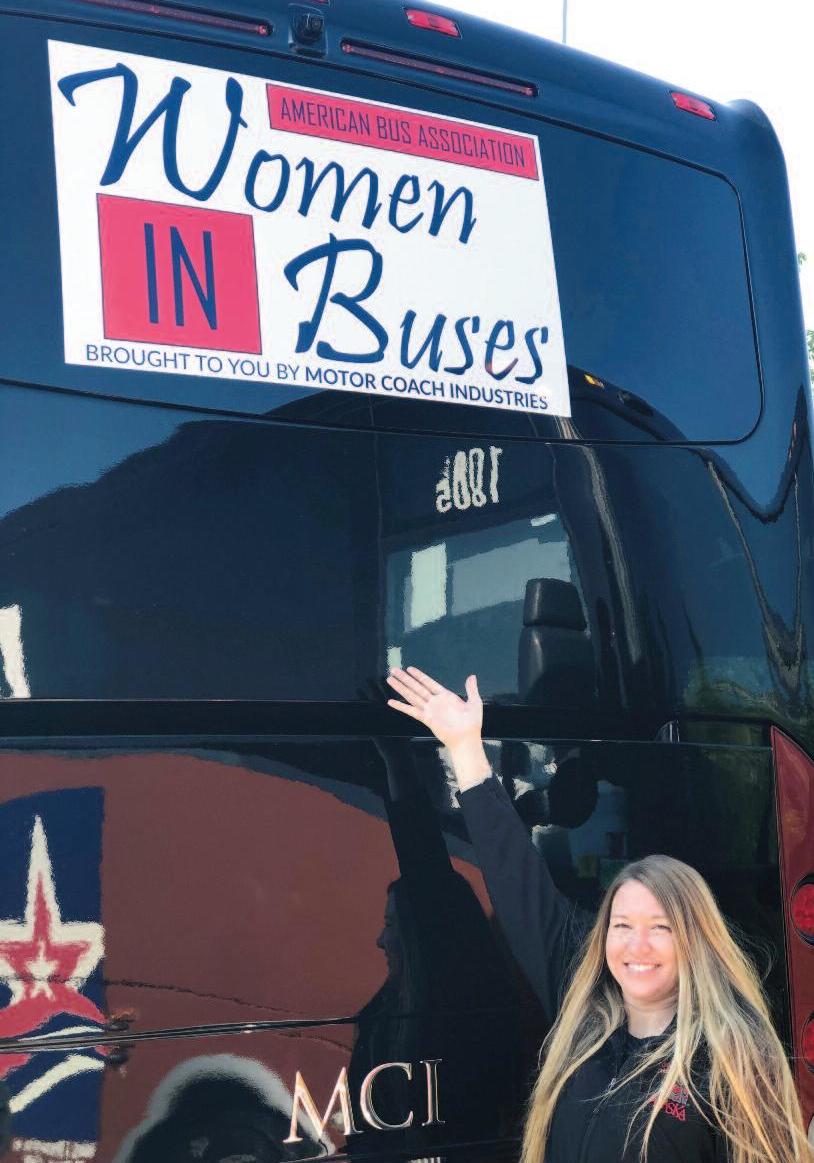
resource for other individuals in the industry. “When the worst we could imagine happened to our businesses, the Women in Buses leadership team realized that by rallying around each other, we had created a group of strong individuals, ” says Elizabeth Hall, current Women in Buses chair. “We wondered how we could do the same for the other members of WIB, along with the entire industry. How could we become a positive resource among everything that was going?”
As a result of sheer desire, support and positivity, Women in Buses launched several projects to lift up industry members, give representatives a place to share the current status of businesses and create an opportunity to lean on each other for strength and insight on rebuilding. Social media presence skyrocketed, along with a weekly Wednesday roundtable providing a variety of topics across the entire travel/tourism industry. All activities portrayed that WIB members were not in this situation alone, despite how it felt in an office. WIB partnered with BusRIDE magazine to create an eBook focusing on the pandemic impacts specifically to females in the industry, interviewing a variety of positions including hotel/attraction representatives, tour operators, motorcoach owners, drivers and mechanics; all showcasing the vast stories of decimation of the motorcoach, travel and tourism industry.
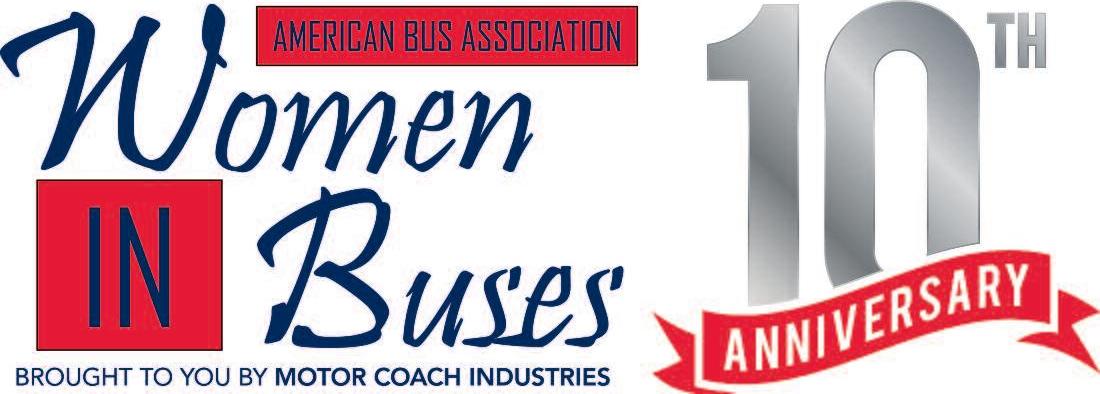
Quarterly webinar series also continued and the WIB Leadership re-established the foundation of Women in Buses to ensure growth, opportunities and resources continue longafterpandemicrecovery.WomeninBuses continues to be a strong voice in the industry, serving as a key representative for many individuals and a variety of organizations.
As Women in Buses continues to evolve, the council aims to provide additional positive resources to grow the success of the industry, women’s leadership and provide educational opportunities for rebuilding/growth of the industry. According to WIB Leadership member Erin Ducharme of Bloom Bus “Our council is a diverse group of strong women who empower each other. The women before me have set the tone of who we are as council and built a solid foundation. Going forward, our focus is to continue our growth and presence. ”
WIB is in the early stages of designing a driver recruitment program, aimed at gaining additional qualified and safe motorcoach drivers. Women in Buses continues to advocate for the WIB members but also plans an expansion to incorporation drivers, mechanics and other representatives through on-site opportunities during industry events like ABA’s Marketplace. WIB is hopeful this program will create additional opportunities to encourage college and high school students to look at tourism-based careers in next steps of life.

Women in Buses has been supported and amplified its footprint by having title sponsors including North Dakota and most recently MCI (Motor Coach Industries). “MCI has long supported Women in Buses because we see so many talented leaders in the motorcoach industry, ” said Brent Maitland, vice president, private sector sales and marketing for New Flyer/MCI. “MCI currently has women in leadership positions that are engaged with WIB, so the linkage is fitting. MCI feels this group has elevated what a dedicated committee can do and has certainly demonstrated industry leadership excellence through the COVID crisis. ”
Taken at the ABA Marketplace in Omaha, here is the Leadership Council of Women in Buses from left to right: Kim Grzywacz, CIT Signature Transportation (past chair); Vicki Bowman; Mimi Veilhauer; Jennifer Stegman, Fullington Tours; Antoinette Gonzales, Pontarelli Companies; Elizabeth Hall, John Hall’s Alaska (current chair); Erin Ducharme, Bloom Bus; Carol Mondello and Jodi Merritt, H&L Charters.


Who Knew There Would Be Math?
by Dave Millhouser Photos from NBT Collection
Shown here is an ACF-Brill similar to the one mentioned in the article. Other than the very last ones, they were powered by an underfloor Hall-Scott gasoline engine. They also had an air-operated passenger door behind the front axle, allowing a passenger seat to be placed across from the driver.

Who knew there would be math? Navigating the old Brill down Route 66 from Chicago towards St. Louis, there were 11 rail crossings, and I had lost count of how many we had passed. It was night, those jewels were sneaky, and the Brill’s brakes were reluctant. Losing count forced me to actually 26•NationalBusTrader/January,2021 pay attention in order to stop without straddling the tracks.
In the good old days weak brakes and under-powered engines meant stopping required extensive planning, as did accelerating and lane changes.
One of the hallmarks of the bus business is that it requires long-term thinking. Spotting a rail crossing just in time to be clobbered by a locomotive is a bad thing.
Coaches are expensive, so a ton of capital (or debt) is tied up in your fleet. Couple this with the fact that the used coach mar-
In 1980 I convinced a school bus operator to buy a coach by saying, “If it doesn’t work out, you can sell it. ” It was true . . . then. Used coaches retained a huge percentage of their value. Today, not so much – for a bunch of reasons too complex to delve into here.
In practical terms this means it is important to be careful about what kind of coaches you buy, how many and how you equip them. Gone are the days when you could gobble up a few stock units to pursue an opportunity, then take a minimal loss if things did not work out and you had to unload them. A number of charter companies will likely fail in coming months, and most of them will be operators who took on too much debt in an attempt to meet peak, rather than average, demand.
In 1998 a Brooklyn operator ordered a couple of 45-foot commuter buses without a lavatory (for maximum seating). His loving salesman talked him into paying extra for lav plumbing just in case scheduled service pooped out (pun intended). It did, so he easily installed the rest of the bathroom, converted the buses to charter configuration and lived happily ever after.
Boiled down, it is important to have the right number and kind of buses, equipped in ways that allow you flexibility in serving your customers.
One example is entertainment systems. Many folks now carry their own, in the form
Other coach operators may select a brand based on the availability of parts and support. This photo shows a portion of the big MCI parts warehouse and shipping facility in Louisville, Kentucky. Many bus manufacturers offer overnight parts shipping from their locations.
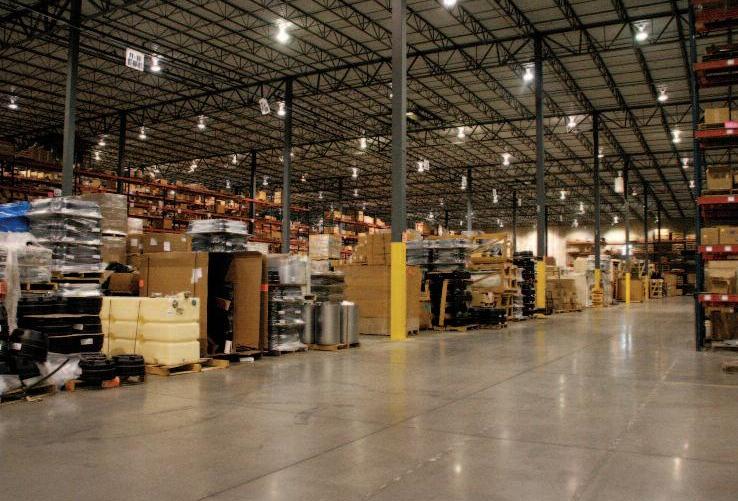
of smartphones etc. so it might be tempting to skimp. On the other hand, some groups want a shared experience like movies or reviewing game films for athletic teams. There is balance between saving money and losing opportunities.
ADA equipment is another example where long term thinking is key.
You get it, there are a number of options that need to be considered with the future in mind. Some will enhance the coach’s residual value, but some can actually diminish it. If it does not pay for itself . . . fuggetaboutit.
Long-term thinking may make certain brands of coaches better choices. Most of the buses currently in the U.S. market are pretty darned good (and none are perfect). Quality of service is critical. Whoever has the best support in your area may be the best bus, and some operators choose their brand based on nearby service facilities or their relationship with regional tech reps.
Our author suggests that long-term thinking may make certain brands of coaches better choices. For example, numerous coach operators decided on a brand that offers excellent support and service in their area. Shown here is the Setra service facility in Winter Garden, Florida.
Post pandemic, choosing a brand may be even more critical. It is possible that at least some will scale back or leave our market.
Historically some operators “beat the system” by purchasing new makes of buses for substantially less than established builders charge. That choice is sometimes based on belief that legacy manufacturers are somehow “overcharging. ” Sometimes new brands are successful, and early adopters make out well. Someone had the courage to be the first to eat a lobster.
On the other hand, many entries (or their domestic distributors) succumb to the high costs of supporting coaches in the demanding U.S. market, and retreat. Off the top of my (balding) head I can name 13 who have bailed out, leaving their U.S. products “orphaned. ” Covid may expand their ranks.

Balancing cost of acquisition with longterm operating expenses and residual value is a calculation, in our business, that has to be done with the long term in mind. Who knew there would be math? q




